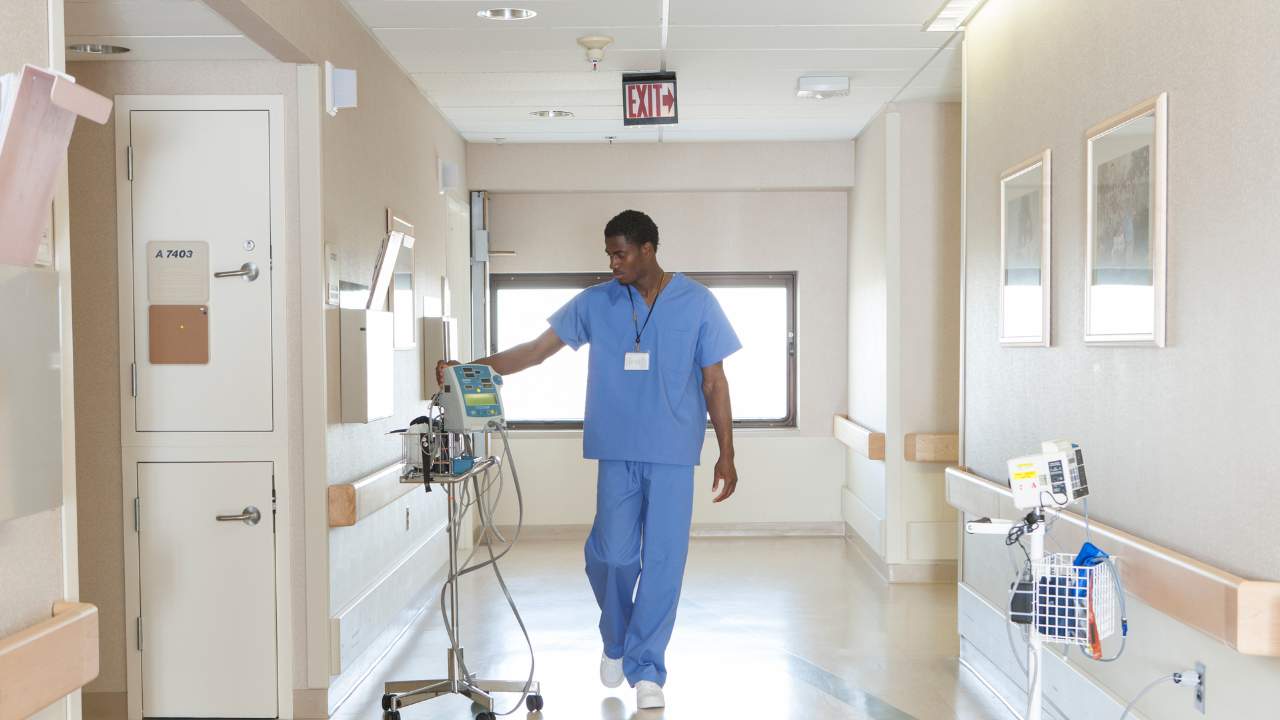“Clear, accurate, and accessible documentation is an essential element of safe, quality, evidence-based nursing practice.”
Thus begins the American Nurses Association’s (ANA’s) Principles for Nursing Documentation. Discover the six principles outlined by the ANA, types of nursing notes, and tips for effective charting in this ultimate guide to nurse documentation.
What Is Medical Charting?

Also called a medical record, health record, or patient chart, a medical chart refers to documentation that includes a patient’s medical history and clinical data. This record or chart encompasses treatment plans, surgeries, medications, vital signs, diagnoses, and other information relevant to the patient’s healthcare.
Many healthcare professionals, such as physicians, radiological technicians, laboratory technicians, and, of course, nurses, may be involved in creating and managing medical records. Likewise, nurse charts or nursing record systems refer to the documentation of care that nurses or other healthcare professionals plan and provide to individual patients. These records constitute all the available information about nursing care after treatment has been provided. How healthcare providers document this information has varied over time and may also vary from one setting to another.
Importance of Nurse Charting
Quality nursing care is dependent on clear and accurate documentation. Nurses must obtain and use this information to provide and coordinate care with other healthcare team members. Furthermore, this record allows care to continue uninterrupted when nurses change shifts and can guide future care. For example, if a patient returns to a hospital months after initial treatment, documentation of the patient’s symptoms and treatments can inform current diagnoses and care plans.
Nurse documentation has the following uses:
- Communicating with other members of the healthcare team: Through electronic health records (EHRs), members of the healthcare team can stay informed of assessments, clinical problems, medication records, patient responses and outcomes, and other essential information, all in real-time.
- Communicating with other professionals: Nurses must also document care for several other purposes, including compliance, credentialing, legal, research, reimbursement, regulation and legislation, and quality process and performance improvement.
Even if nurses do their best to provide quality patient care, malpractice lawsuits are always possible. Therefore, not only is documentation an essential aspect of providing quality care, but it’s also a protection for clinicians and facilities. Through proper documentation, nurses can demonstrate compliance with federal, state, third-party payer, and other regulations.
6 Principles of Nursing Documentation
According to ANA policy documents, state nurse practice acts, government regulations, and organizational policies and procedures—documentation is essential to nursing practice. Therefore, nurses must know how to document correctly, and hospitals and other healthcare facilities must provide the necessary resources for nurses to be able to chart safely and effectively. According to the American Nurses Association, the following are six fundamentals of medical record documentation:
1. Documentation Characteristics
Regardless of the method used to record nursing care, nurse charts must have the following characteristics:
- Accessible and retrievable
- Accurate, relevant, and consistent
- Auditable
- Clear, concise, and complete
- Legible/readable
- Thoughtful
- Timely, contemporaneous, and sequential
- Reflective of the nursing process
2. Education and Training
Hospitals and other facilities must provide nurses with sufficient training in the technical elements of documentation. Nurses must be competent in using computers and their supporting hardware and proficient in using charting software systems.
3. Policies and Procedures
Nurses must be familiar with organizational policies and procedures related to documentation and follow these as part of their nursing practice.
4. Protection Systems
In accordance with industry standards, governmental mandates, accrediting agencies, and organizational policies and procedures, documentation systems must guarantee the following protections:
- Security of data
- Protection of patient identification
- Confidentiality of patient, clinician, and organizational information
5. Documentation Entries
All documentation, including entries into organization documents or health records, must meet the following requirements:
- Accurate, valid, and complete
- Authenticated (the authors identify themselves and guarantee that the information is truthful and that nothing has been added or inserted)
- Dated and time-stamped by the persons who create the entries
- Legible/readable
- Using standardized terminology
6. Standardized Terminologies
Documentation should utilize standardized terminologies, including acronyms and symbols, to describe the planning, delivery, and evaluation of the patient’s nursing care.
What Types of Nursing Documentation Are There?
The following are a few examples of methods for charting nursing notes:
Narrative Nursing Notes
As the name indicates, this type of documentation narrates the nurses’ actions and observations. This note-taking method is straightforward and easily understood by others. However, nurses’ notes may be unnecessarily long and repetitive, and descriptions may be subjective. Many nurse charting systems include a section for “additional nursing notes,” but it is often optional and used only when a nurse’s findings don’t fit into other parts of the charting system.
SOAP Charting in Nursing
The acronym SOAP stands for “subjective,” “objective,” “assessment,” and “plan.” Some nurses prefer the acronym SOAP(IER) to include “intervention,” “evaluation,” and “revision.” Each word is a reminder of a step in the charting process.
- Subjective: This part includes the patient’s medical history, encompassing any information provided by the patient or family members.
- Objective: This includes the vital signs, laboratory results, and any other data obtained during the patient’s teratment at the healthcare facility.
- Assessment: This step refers to evaluating the previously obtained subjective and objective data to reach a diagnosis.
- Plan: After obtaining a diagnosis, the healthcare team must create a care plan, including treatments, instructions for the patient, follow-up appointments, etc.
- Interventions: Nurses must document everything they do for patients, including administering medications, providing education and instructions, etc.
- Evaluation: This step is an assessment of the results of interventions based on subjective and objective data. For example, is the patient reporting a decrease in pain?
- Revision: This section indicates whether any changes in the care plan are necessary.
Since this type of documentation is comprehensive, it is also time-consuming, which explains why its use is becoming less prevalent.

Charting by Exception
The main advantage of this charting system is that nursing notes are shorter and less time-consuming since nurses only need to document what is outside the norm. However, this method requires nurses to know what is typical for particular patients. Furthermore, with this system, it is impossible to determine whether clinicians performed specific procedures, and it may be more challenging to evaluate the evolution of the patient’s condition. Although the specifics of this type of documentation vary, many settings use checklists and flow sheets to document patient information. Therefore, documentation simply requires nurses to check a few boxes or sign their initials.
Dos and Don’ts of Nursing Documentation
Of course, you want to document accurately and clearly and contribute to providing the best possible patient care. However, despite your best intentions, mistakes are possible. Here are a few tips to help you avoid errors or omissions in your notes.
6 Dos of Nurse Charting
Follow these tips to ensure complete and accurate documentation:
- Chart in the right place: This may seem obvious, but you may take notes in the wrong patient’s health record if you don’t double-check the spelling of names and birth dates.
- Be objective: Include your interventions, observations, and information provided by the patients but not opinions or any inappropriate comments about patients, family members, or other members of the care team.
- Include test results and consultation reports: All information relevant to patient care must be available to the healthcare team.
- Record patient communication: Nurses should document any education or instructions provided to patients as well as patient complaints, questions, and other concerns, including the steps taken to address patient concerns.
- Record instances of non-adherence: In addition to documenting interventions that do occur, nurses should report what doesn’t occur, including missed appointments, refusal to provide information, and rejection of treatment recommendations.
- Protect your patients’ healthcare information: Follow your organization’s information security practices to ensure you do not lose patient information and unauthorized individuals do not access it.
4 Don’ts of Nurse Charting
Make sure you don’t fall into the following common charting mistakes:
- Don’t delay charting: Do your best to record your interventions or observations immediately. You could leave out important information if you wait until the end of your shift.
- Don’t routinely copy-paste: It is easy to copy-paste the wrong information. Therefore, it is ideal to document manually or double-check the copy-pasted information.
- Don’t attempt to alter the patient record: If you make a mistake, you must correct it, but you cannot modify your original entry. Mark any corrections or modifications as late entries.
- Don’t forget delegated tasks: Even if you delegate a task, you must verify and document whether those under your direction and supervision completed that task.
Is There an End to Charting in Sight?
There is no way around it: Charting is an essential part of the nursing practice, and it’s not going anywhere. You might change the way you take notes. Handwritten notes may be a thing of the past, and your facility may have moved on to digital checklists. Regardless, as a nurse, you must document—the quality of the care you provide your patients depends on it.
The quality of your nursing care also depends on your assessment skills. Hone your nursing skills by reviewing what a head-to-toe nursing assessment involves.
Additional Sources:
- National Library of Medicine: Nursing record systems: effects on nursing practice and healthcare outcomes
- National Library of Medicine: Keeping good nursing records: a guide
- BMC Nursing: Nursing documentation and its relationship with perceived nursing workload: a mixed-methods study among community nurses














